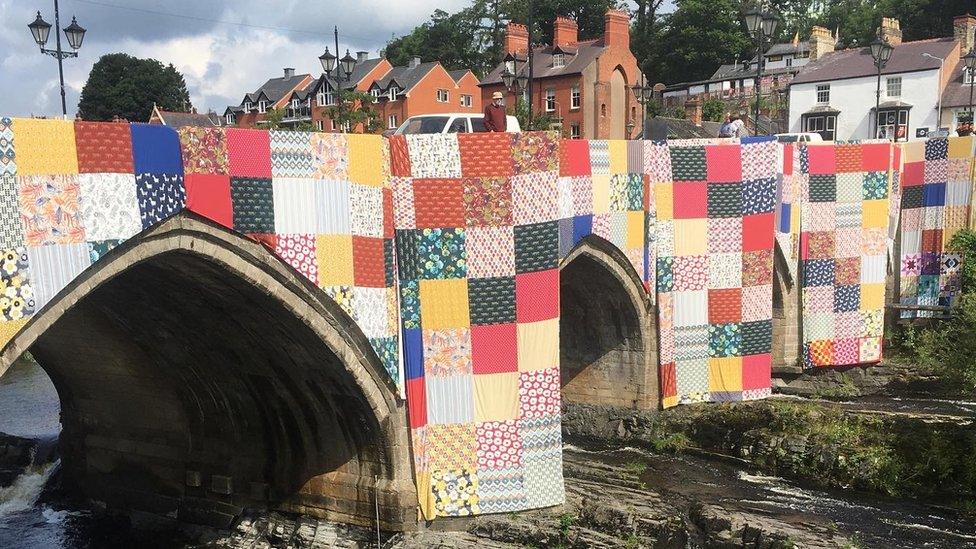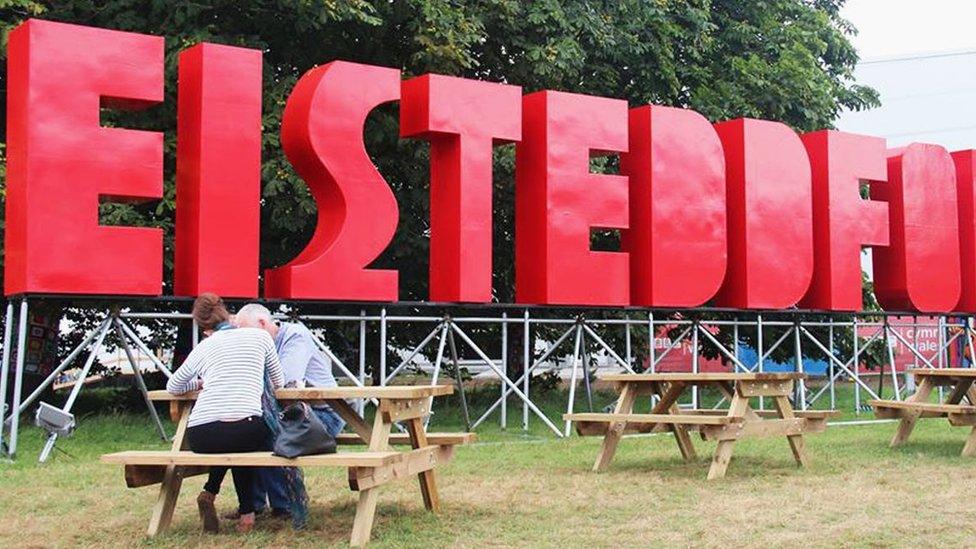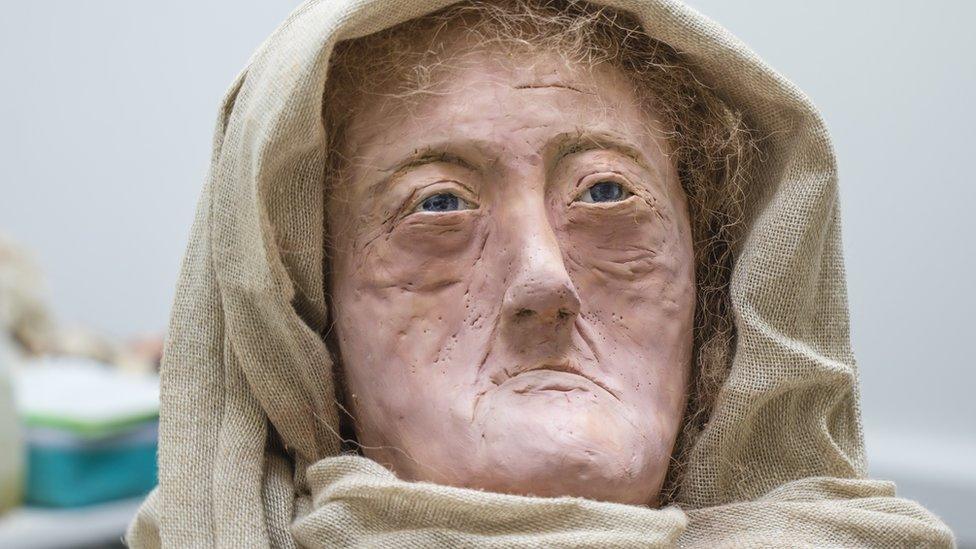Covid forces Llangollen International Eisteddfod to modernise
- Published

Artist Luke Jerram's Bridges, Not Walls "represents Wales and the countries that usually attend the Eisteddfod"
As the Llangollen International Eisteddfod begins this weekend, organisers have said the pandemic has forced it to modernise.
The festival will be held digitally this year, with competitions and concerts streamed across the world.
Organisers said digital components could feature more prominently in the eisteddfod's future.
But one of the main attractions this year is a 60m (200ft) patchwork fabric artwork displayed on the town's bridge.
Commissioned by the festival, artist Luke Jerram's Bridges, Not Walls "represents Wales and the countries that usually attend the Eisteddfod".
Among the digital performances and displays is a choral piece named Tangnefedd (Peace), by Paul Maelor and Mererid Hopwood.
There is a collaboration with BBC Horizons Curiad Calon/Heartbeat and the harpist Catrin Finch will explore the message of peace through music.
Although the eisteddfod has long had a digital presence, organisers said the pandemic forced them to think in a different way, which has been a "benefit".
Message of peace

The bridge's artwork is themed around the eisteddfod's central message of peace
The artwork also makes strong reference to the eisteddfod's central message of peace.
"We've been doing the peace message since 1952," said eisteddfod chairman Rhys Davies.
"Getting that message out is just as important now as it was then, especially after the Covid pandemic."
In exploring the peace message, schoolchildren have been looking at what it means to them.
For Tess, a pupil at Ysgol Gymraeg y Gwernant, it is a place of "safety".
"It can be whatever you want it to be - somewhere to rest," she said.
"It's very exciting to see the eisteddfod back and really interesting to see what peace is to other people," added her classmate Carys.

Betsan Moses, the festival's interim chief executive, says she hopes larger crowds can return next year
The festival will broadcast many different elements over the internet, with organisers saying the events of the past year make its message "more important than ever before".
"At the beginning we were looking at a hybrid approach," said the festival's interim chief executive, Betsan Moses.
"But we decided it would be digital so we could celebrate the peace message in a measured but exciting manner.
"This year has provided an opportunity to explore what is possible digitally and I think moving forward every festival may have to utilise a hybrid approach and using that digital approach, but nothing will beat that live experience."
- Published21 June 2021

- Published26 January 2021

- Published14 August 2019
